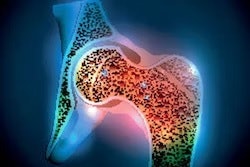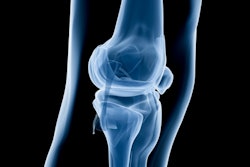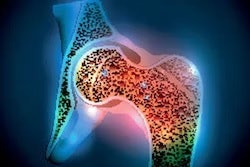Screening for osteoporosis using dedicated bone scans among total hip arthroplasty (THA) patients remains alarmingly low, according to research presented February 14 at the American Academy of Orthopedic Surgeons (AAOS) annual meeting in San Francisco.
Researchers at George Washington University in Washington, DC, identified 380,226 patients in a U.S. claims database who underwent THA. They found that out of 53% of patients who were considered high-risk for osteoporosis, just 12.4% received preoperative dual-energy x-ray absorptiometry (DEXA) scans.
“Our study showed a high prevalence of THA patients at risk for osteoporosis with a low prevalence of preoperative screening,” noted medical student Amil Agarwal, in a presentation delivered at the meeting.
DEXA exams are considered the gold standard for screening for osteoporosis, based on their ability to measure a patient’s bone mineral density. Moreover, osteoporosis is a known major risk factor for THA complications, such as fractures associated with the implants, Agarwal explained.
Previous studies have suggested that screening rates are low among patients undergoing these surgeries, and in this study, Agarwal and colleagues aimed to further characterize the issue.
The researchers first identified 380,226 patients without a prior diagnosis of osteoporosis who underwent primary elective THA from 2010 to 2021. They stratified patients as either “high-risk” or “low-risk” for osteoporosis based on current guidelines.
In total, 201,450 (53%) of the patients who underwent THA were considered high-risk for osteoporosis, according to the findings. Of the high-risk patients, just 12.4% of patients received a preoperative DEXA scan.
In addition, within five years, high-risk THA patients had a significantly higher cumulative incidence for fragility fractures (hazard ratio [HR] = 2.1), as well as higher risk for periprosthetic fractures (HR = 1.7) when compared with low-risk patients, the group found.
Ultimately, THA as well as total knee arthroplasty are among the most common orthopedic procedures in the U.S., with more than 1 million of the surgeries performed each year. Among these patients, identifying those at high risk for osteoporosis could have a significant clinical impact, Agarwal noted.
“Preoperative osteoporosis screening and subsequent optimization by hip arthroplasty surgeons can both reduce osteoporosis-related fractures following THA as well as help address the osteoporosis epidemic,” he concluded.



















